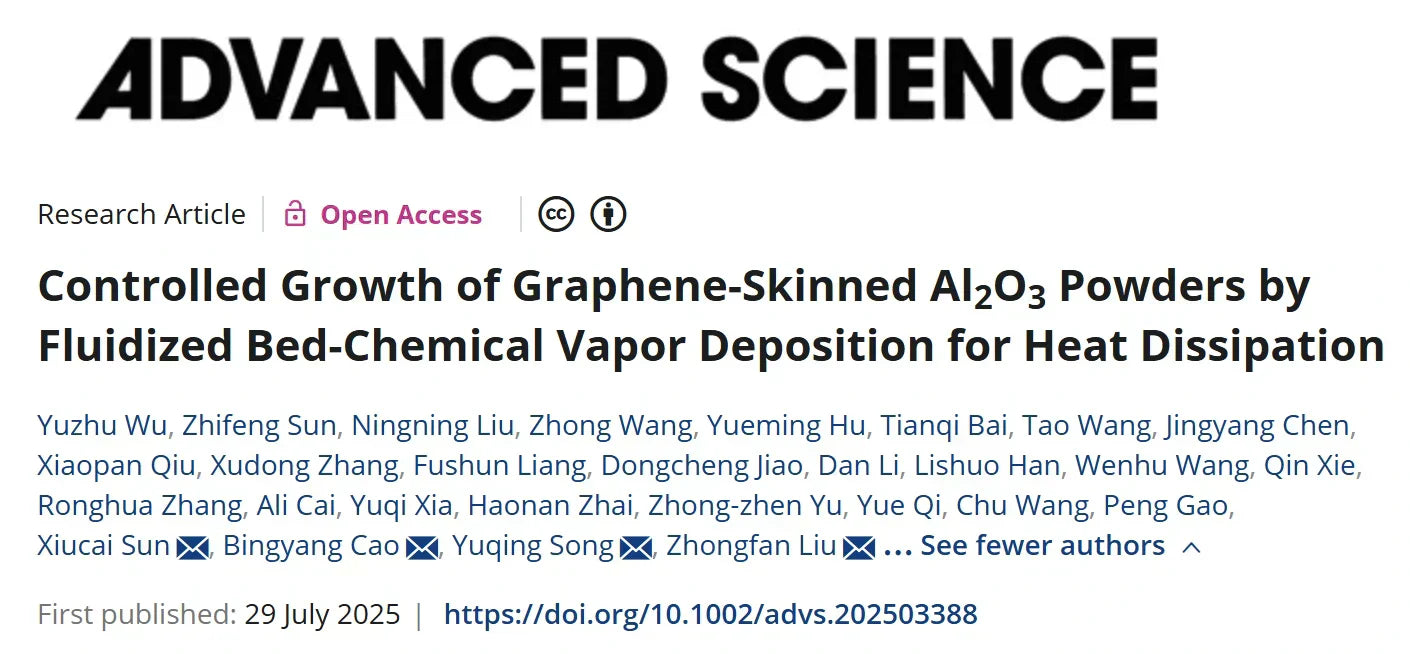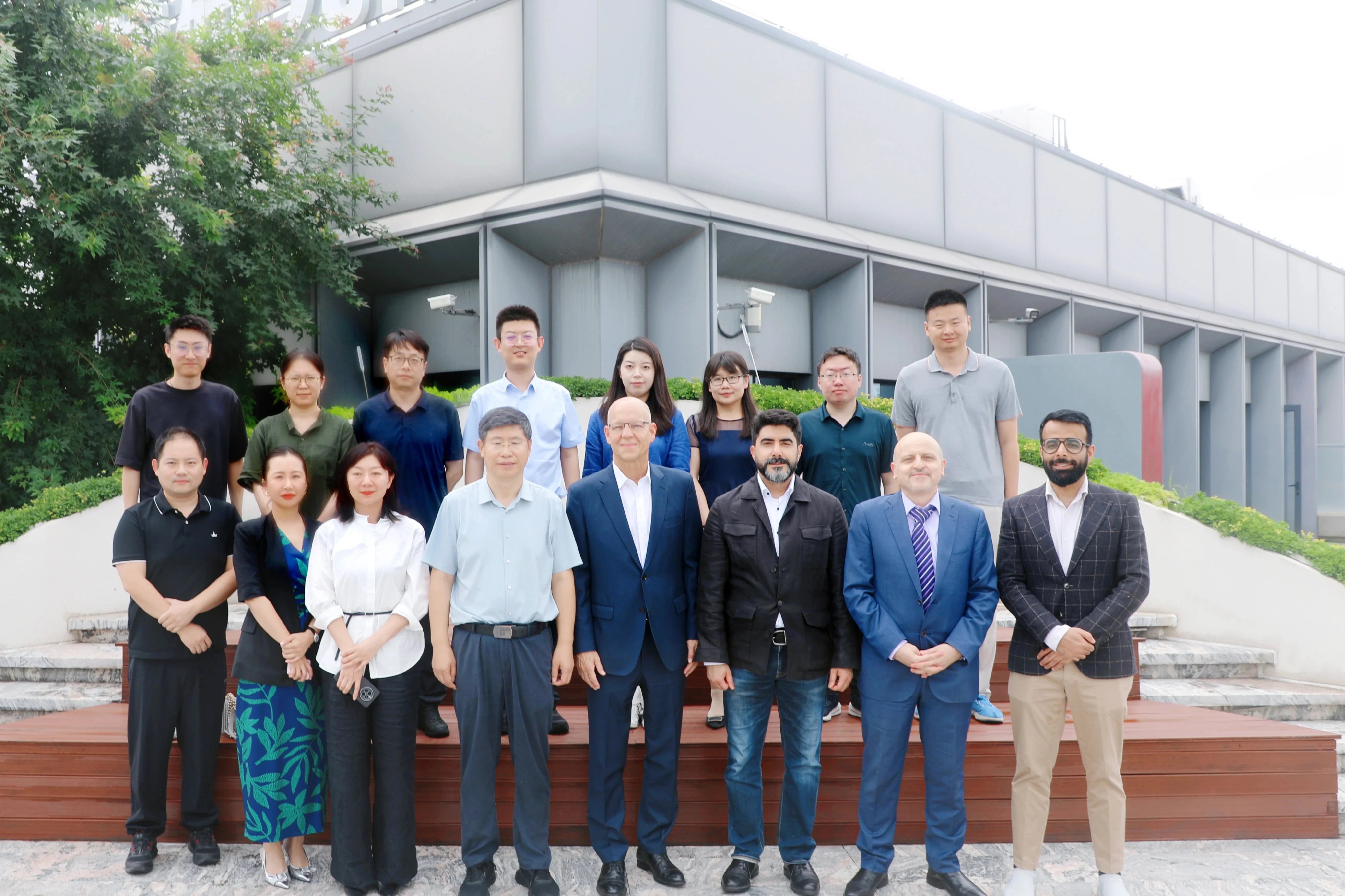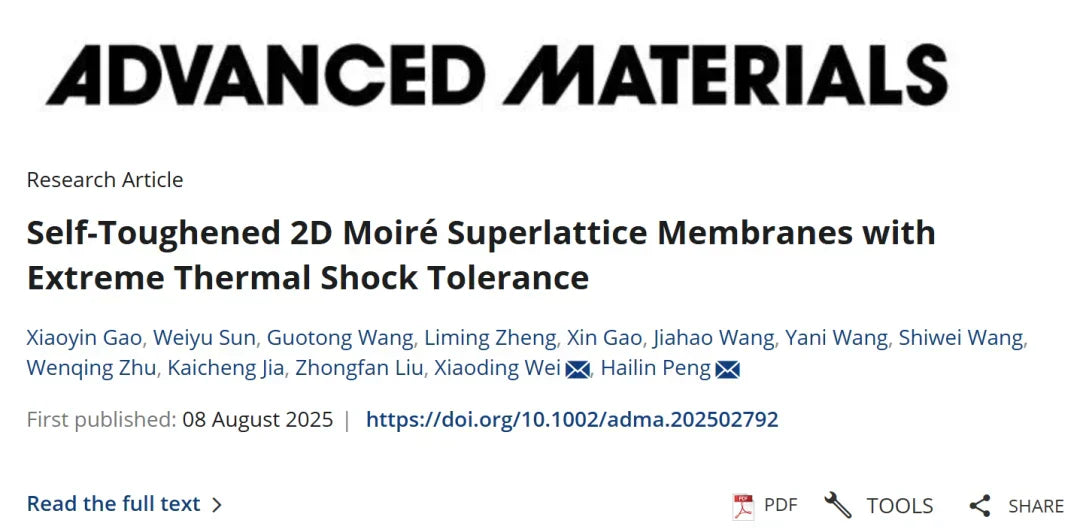With the rapid evolution of AI, 6G communications, and high-performance computing, the thermal power density of electronic devices is growing exponentially. Thermal management has become a critical bottleneck affecting the reliability and performance of next-generation chips. Carbon-based materials, especially graphene, are highly promising due to their exceptional intrinsic thermal conductivity. However, translating graphene’s theoretical advantages into practical performance remains challenging, hindered by inconsistent synthesis quality, high interfacial thermal resistance, and dispersion issues in composite systems.
A research team led by Academician Zhongfan Liu (Peking University) has developed a novel Graphene-Skinned Al₂O₃ Powder using a Fluidized Bed Chemical Vapor Deposition (FB-CVD) method. This approach enables in-situ growth of continuous, multilayer graphene coatings on Al₂O₃ particles, creating a “Graphene skin” that acts as a Phonon Expressway to significantly enhance heat conduction.
Key Innovations:
- FB-CVD process achieves conformal graphene growth with controllable thickness and high crystallinity, outperforming traditional static CVD in quality, thermal transport efficiency, and scalability.
- Maintains the excellent dispersibility and process compatibility of industrial Al₂O₃ powders while preventing graphene restacking in polymer matrices.
- Optimized particle size distribution (5:40:70 μm) improves packing density to 95.3%, further boosting composite thermal conductivity.

Figure 1: Schematic illustration of the preparation process of graphene-skinned Al₂O₃ powder-based TIM.
 Figure 2: Structural and quality characterization of graphene-skinned Al₂O₃ powders.
Figure 2: Structural and quality characterization of graphene-skinned Al₂O₃ powders.
 Figure 3: Thermal conductivity characteristics of graphene-skinned Al₂O₃ powders.
Figure 3: Thermal conductivity characteristics of graphene-skinned Al₂O₃ powders.
 Figure 4: Thermal conduction properties of graphene
Figure 4: Thermal conduction properties of graphene
From synthesis optimization to theoretical mechanism elucidation and industrial process integration, this work not only validates graphene’s practicality in thermal management but also establishes a scalable fabrication route for graphene-ceramic composite powders. With the growing demand in AI chips, laser systems, and power modules, Graphene-Skinned Al₂O₃ offers a new paradigm for next-generation thermal interface materials.





Leave a comment
All comments are moderated before being published.
This site is protected by hCaptcha and the hCaptcha Privacy Policy and Terms of Service apply.